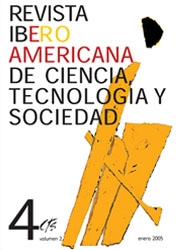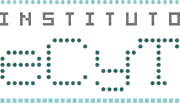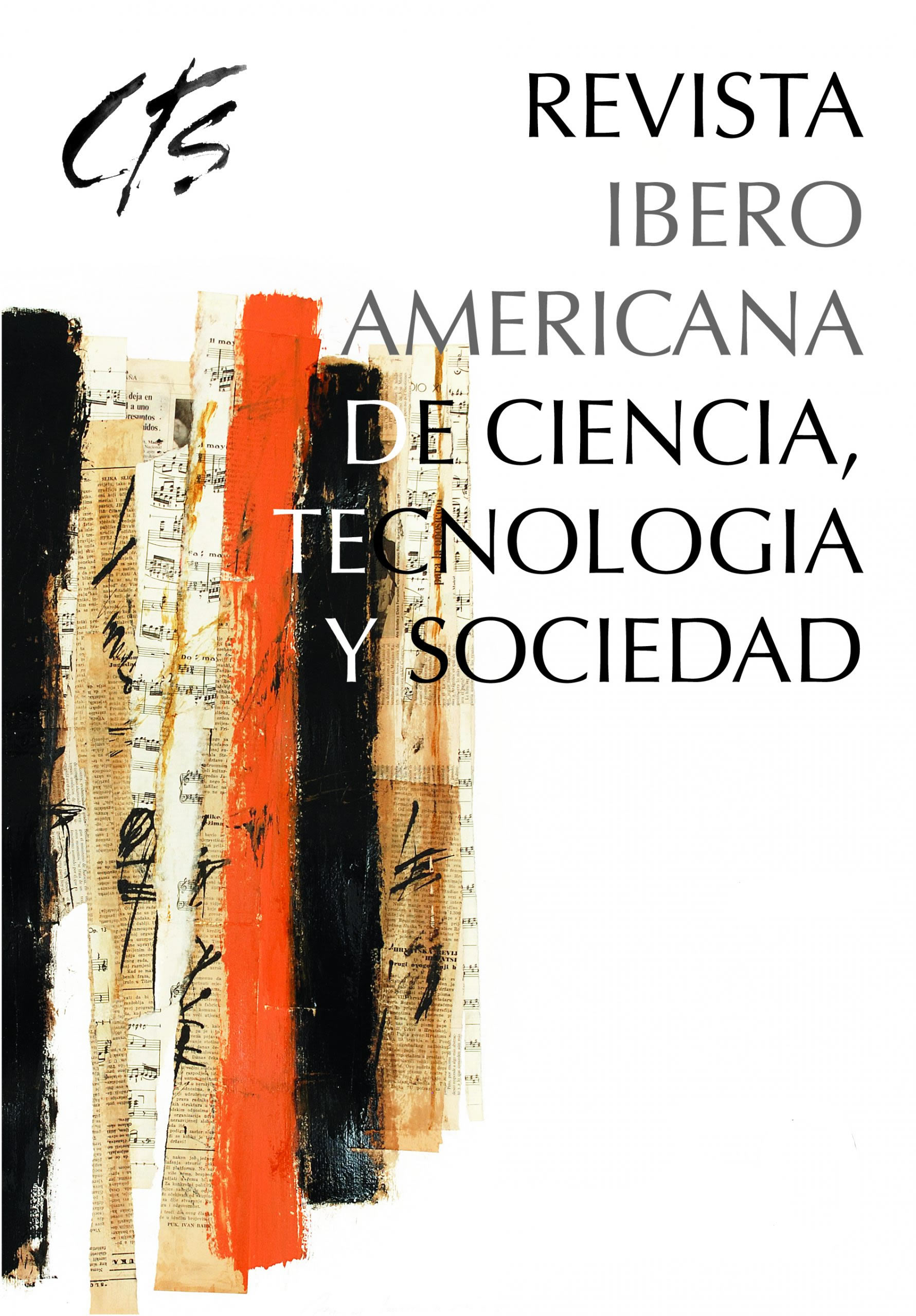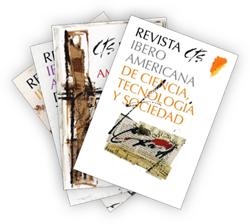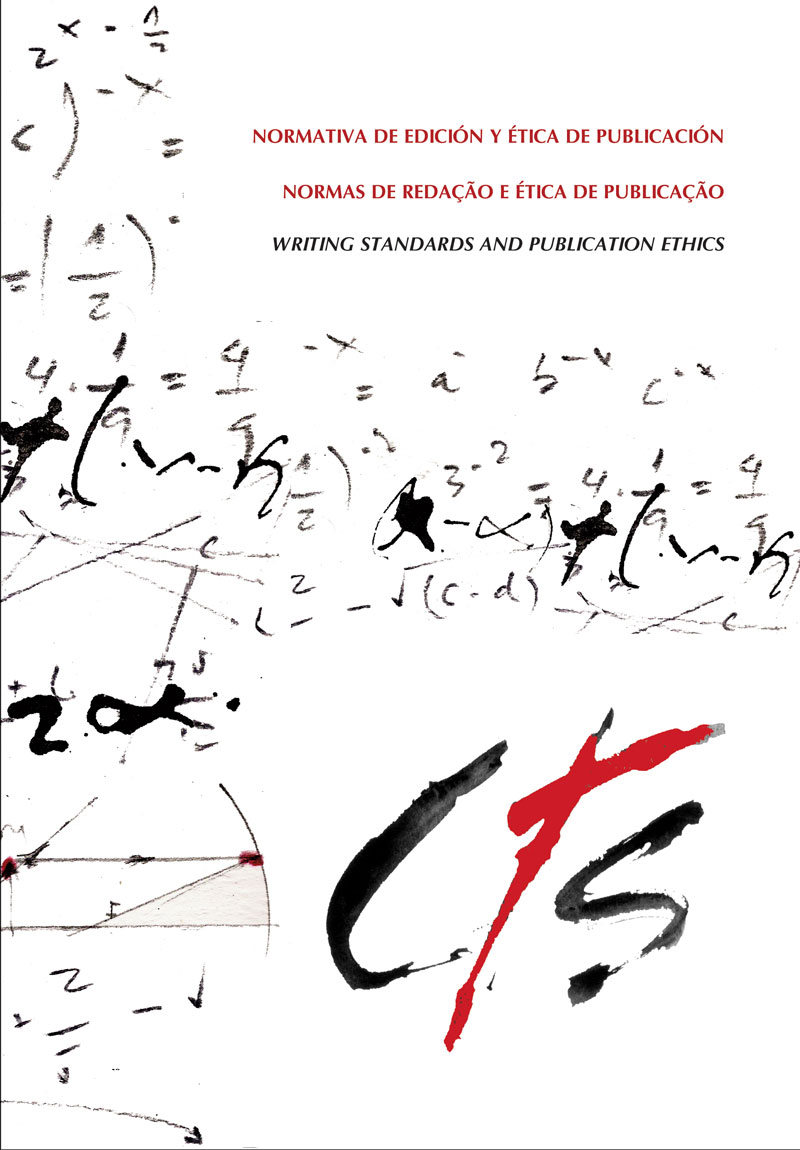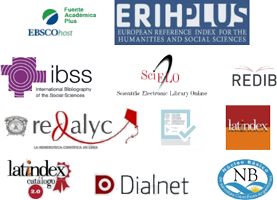From “Atoms for Peace” to Power Reactors
Technology and Nuclear Policy in Argentina (1955–1976)
DOI:
https://doi.org/10.52712/issn.1850-0013-1030Keywords:
Argentina, history of science, nuclear energy, CNEAAbstract
During the 1955-76 period, Argentina’s nuclear program entered the international arena, as the Argentine Atomic Energy Commission constructed four research reactors, purchased the first power reactor Atucha I from a German firm, put it into operation and acquired a second power reactor from a Canadian firm. This article examines these developments in connection with the unstable local political context and the international nuclear landscape. Particularly, it analyzes Argentine diplomatic policy opposing to Tlatelolco Treaty (1967) and Non Proliferation of Nuclear Weapons Treaty (1968) and the consequences derived from international pressures following India’s atomic explosion in 1974. Finally, Argentina’s nuclear program expectations are compared with those claimed by Brazil and Mexico in the early the 1970s.
Downloads
References
ADLER, E. (1988): “State Institutions, Ideology, and Autonomous Technological Development,” Latin American Research Review 3, pp. 59-90.
ALEGRÍA, J. L., CSIK, B. J., NASIJLETI, E. V., PAPADÓPULOS, C. C. y QUIHILLALT, O. A. (1964): “La contribución de la energía nuclear a la solución del problema energético argentino”, Informe N° 115, Buenos Aires, CNEA. Reimpreso en Peaceful Uses of Atomic Energy: Proceedings of the Third International Conference, vol. 1, New York, United Nations, 1965.
ALEGRÍA, J. L., COLL, J. A. y SUTER, T. (1972a): “Una breve reseña histórica de la CNEA”, Buenos Aires, mimeo. CNEA-P.
ALEGRÍA, J. L., COLL, J. A. y QUIHILLALT, O. A. (1972b): “El efecto de la cooperación internacional en el plan nuclear argentino”, en Peaceful Uses of Atomic Energy: Proceedings of the Fourth International Conference, vol. 1, New York, United Nations, pp. 661-65.
ALONSO, M. (1985): “The Impact in Latin America”, en , J. Pilat, R. Pendley y Ch. Ebinger (eds.): Atoms for Peace: An Analysis After Thirty Years, Boulder y Londres, Westview Press, pp. 83-90.
APCNEA (1972): “La política nuclear argentina”, Ciencia Nueva, año 3, num. 19, pp. 40-43.
CABRAL, R. (1985): “The Peron-Richter Fusion Program, 1948-1953”, XVIIIth International Congress for the History of Science, University of California, 1-8 August.
CARASALES, J. (1997): “Las explosiones nucleares pacíficas y la actitud argentina”, Boletín del Centro Naval, vol. 115, num. 787, pp. 485-512.
CARASALES, J. (1987): El desarme de los desarmados. Argentina y el Tratado de No Proliferación de Armas Nucleares, Buenos Aires, Editorial Pleamar.
CASTRO MADERO, C. (1976): “Comisión Nacional de Energía Atómica. Sus planes”, Industria y Química, N° 238. pp. 10-12.
CHILD, J. (1979): “Geopolitical Thinking in Latin America”, Latin American Research Review, vol. 14, num. 2, pp. 89-111.
CLARITY, J. (1974): “Iran Negotiates for Nuclear Energy Aid”, The New York Times, May 27. p.2.
CNEA (s.f.): Feasibility Study: Nuclear Power Plant for Greater Buenos Aires-Litoral Area: Summary, Buenos Aires, CNEA.
CNEA (1970): Memoria Anual.
COSENTINO, J. O. (1972): “Papel de los reactores de investigación en el programa nuclear argentino”, en Peaceful Uses of Atomic Energy: Proceedings of the Fourth National Conference, vol. 6, New York, United Nations, pp. 291-98.
COURTNEY, W., “Nuclear Choices for Friendly Rivals”, en Nonproliferation and US Foreign Policy, Yager (ed.), Washington D.C., The Brookings Institution, 1980, p. 241-79.
EKLUND, S. (1964): “Some Topical Atomic Power Questions”, International Atomic Energy Agency Bulletin, vol. 6, num. 3, pp. 7-16.
ENERGY INTERNATIONAL (1972): “Nuclear Plans in Latin America”, vol. 9, num. 6: 55.
FREMMAN, A. (1960): “The Development of International Co-operation in the Peaceful Use of Atomic Energy”, American Journal of International Law, vol. 54, num. 2, pp. 383-92.
GARASINO, L. (1970): “El Tratado de No Proliferación Nuclear. Realidad Presente e Interrogantes”, Estrategia, num. 9, pp. 65-74.
GARCÍA, M. y REISING, A. (2002): “La consolidación del Centro Atómico Bariloche: una aproximación desde el desarrollo de la física experimental”, Saber y Tiempo, vol. 4., num. 14, pp. 33-55.
GAVIOLA, E. (1955): “El caso Richter”, Esto Es, num. 96, pp. 26-29.
GUGLIALMELLI, J. (1978): “Argentina ratifica el tratado de Tlatelolco, mientras las superpotencias condicionan su adhesión al segundo protocolo adicional”, Estrategia, num. 52/53: pp. 5-29.
GUGLIALMELLI, J. (1976): “Argentina. Plan nuclear y presiones externas”, Estrategia, num. 42: pp. 5-19.
HEWLETT, R. y HOLL, J. (1989): Atoms for Peace and War, 1953-1961, Berkeley, University of California Press.
HURTADO DE MENDOZA, D. (2004): “Autonomy, even regional hegemony: the hard way toward the first research reactor (1945-1958)”. Aceptado para su publicación en
Science in Context.
HYMANS, J. (2001): “Of Gauchos and Gringos: Why Argentina Never Wanted the Bomb, and Why America Thought It Did”, Security Studies, vol. 10, num. 3, pp. 153-85.
IAEA (1972): “Development of Nuclear Energy in the Republic of Argentina”, International Atomic Energy Agency Bulletin, vol. 14, num. 6, pp. 2-9.
IAEA (1969a): “Radiation and the Green Revolution”, International Atomic Energy Agency Bulletin, vol. 11, num. 5, pp. 16-19.
IAEA (1969b): “Nuclear Power to Aid Development”, International Atomic Energy Agency Bulletin, vol. 11, num. 6, pp. 26-31.
IAEA (1968): “How the UN Approved the NPT”, International Atomic Energy Agency Bulletin, vol. 10, num. 4, pp. 9-17.
IAEA (1967): “The New Board of Governors”, International Atomic Energy Agency Bulletin, vol. 9, num. 6, pp. 9-10.
IAEA (1962a): “Another Survey in Latin America”, International Atomic Energy Agency Bulletin, vol. 4, num. 2, pp. 15-19.
IAEA (1962b): “Assistance to Life Science Studies in Argentina”, International Atomic Energy Agency Bulletin, vol. 4, num. 3, pp. 8-9.
IAEA (1961): “Atomic Assistance in 1961”, International Atomic Energy Agency Bulletin, vol. 3, num. 2, pp. 16-18.
KREUTHMEIER, J. y CROW, R. (1971): “What Nuclear Power Has to Offer Developing Countries”, Energy International, vol. 8, num. 9, pp. 14-17.
LANGER, E. (1966): “Argentina: Seizure of the University Leaves Intellectual Casualties”, Sciences, vol. 153, num. 3742, pp. 1362-64.
LIBANATI, N. de y BARO, G. (1972): “Estudios de posgraduación y capacitación profesional en el ámbito de la Comisión Nacional de Energía Atómica Argentina”, en Peaceful Uses of Atomic Energy: Proceedings of the Fourth National Conference, vol. 12, New York, United Nations, pp. 513-28.
LÓPEZ DÁVALOS, A. y BADINO, N. (2000): J. A. Balseiro: crónica de una ilusión. Una historia de la física en la Argentina, México-Buenos Aires, Fondo de Cultura Económica.
LUDDEMANN, M. (1983): “Nuclear Power in Latin America: An Overvoiew of Its Present Status”, Journal of Interamerican Studies and World Affairs, vol. 25, num. 3, pp. 377-415.
MARISCOTTI, M. (1990): “The Bizarre Origins in Atomic Energy in Argentina”, in R. Cabral (ed.), The Nuclear Technology Debate in Latin America, Suecia, University of Gothenburg, pp. 3-15.
MARISCOTTI, M. (1985): El secreto atómico de Huemul. Crónica del origen de la energía atómica en la Argentina, Buenos Aires, Sudamericana-Planeta.
MARTÍNEZ VIDAL, C. (1994): “Jorge Alberto Sábato: una vida”, en Repensando la política tecnológica.Homenaje a Jorge A. Sábato, Ciapuscio, H. (comp.), Buenos Aires, Nueva Visión, pp. 79-102.
MEDING, H. (1999): La ruta de los nazis en tiempos de Perón, Buenos Aires, Emecé Editores.
NOVITSKI, J. (1974), “Argentina: Nuclear Power”, Washington Post, December 12, p. A20.
NUCLEAR INDUSTRY (1973a): “International News Notes”, Nuclear Industry, vol. 20, num. 1, p. 36.
NUCLEAR INDUSTRY (1973b): “AECL, After Decade of Frustrations, Sells PHWR to Argentina”, Nuclear Industry, vol. 20, num. 4, pp. 49-50.
NUCLEAR INDUSTRY (1973c), “Attack at Atucha Station”, Nuclear Industry, vol. 20, num. 4, pp. 49-50.
NUCLEAR INDUSTRY (1973d): “International News Notes”, Nuclear Industry, vol. 20, num. 11, p. 68.
NUCLEAR INDUSTRY (1971): “Small Units for Underdeveloped Areas”, Nuclear Industry, vol. 18, num. 9, p. 15.
NUCLEAR NEWS (1971): “Second Plant Planned”, Nuclear News, vol. 14, p. 60.
ORNSTEIN, R. (1970): “La desnuclearización de América Latina”, Estrategia, num. 9, pp. 81-92.
PÉREZ FERREIRA, E. (1968): “El proyecto ´IALE´ de la CNEA”, Acta científica, vol. 1, num. 4, pp. 49-50.
PONEMAN, D. (1982): “Argentina”, in Poneman, D. (ed.), Nuclear Power in the Developing World, London, George Allen & Unwin.
PRIMERA PLANA (1967): “Un sabio atómico”, Primera Plana, num. 240, pp. 36-39.
QUIHILLALT, O. (1969): “La central nuclear en Atucha”, Ciencia e Investigación, vol. 25, num. 10, pp. 435-46.
RADICELLA, R. (2002): “Los veinte radioisótopos descubiertos en la Argentina”, La revista de la Comisión Nacional de Energía Atómica, año 2, num. 5/6, pp. 21-25.
RAPOPORT, H. (1985): “Una reseña de los reactores de investigación y su utilización en la República Argentina”. Trabajo presentado al Encuentro del décimo aniversario de la sección latinoamericana de la American Nuclear Society, Río de Janeiro, Brasil, Agosto.
PÉREZ FERREIRA, E. (1968): “El proyecto ´IALE´ de la CNEA”, Acta científica, vol. 1, num. 4, pp. 49-50.
PONEMAN, D. (1982): “Argentina”, in Poneman, D. (ed.), Nuclear Power in the Developing World, London, George Allen & Unwin.
PRIMERA PLANA (1967): “Un sabio atómico”, Primera Plana, num. 240, pp. 36-39.
QUIHILLALT, O. (1969): “La central nuclear en Atucha”, Ciencia e Investigación, vol. 25, num. 10, pp. 435-46.
RADICELLA, R. (2002): “Los veinte radioisótopos descubiertos en la Argentina”, La revista de la Comisión Nacional de Energía Atómica, año 2, num. 5/6, pp. 21-25.
RAPOPORT, H. (1985): “Una reseña de los reactores de investigación y su utilización en la República Argentina”. Trabajo presentado al Encuentro del décimo aniversario de la sección latinoamericana de la American Nuclear Society, Río de Janeiro, Brasil, Agosto.
REDICK, J. (1975): “Regional Nuclear Arms Control in Latin America”, International Organization, vol. 29, num. 2, pp. 415-45.
REDICK, J. (1972): Military Potential of Latin American Nuclear Energy Programs, London, Sage Publications.
ROUQUIÉ, A. (1982): Poder militar y sociedad política en la Argentina, 1943-1973.II, Buenos Aires, Emecé Editores.
RUDA, J. M. (1970): “La posición argentina en cuanto al Tratado sobre la No Proliferación de las Armas Nucleares”, Estrategia, num. 9, pp. 75-80.
SÁBATO, J. (1973): “Atomic Energy in Argentina: a Case Study”, World Development, vol. 1, num. 8, pp. 23-38.
SÁBATO, J. (1972): “Quince años de metalurgia en la Comisión Nacional de Energía Atómica”, Ciencia Nueva, año III, núm. 15, pp. 7-15.
SÁBATO, J. (1970): “Para el prontuario del Plan Nuclear Argentino”, Ciencia Nueva, año I, núm. 1, pp. 32-46.
SÁBATO, J. (1962): “La formación de especialistas en metalurgia en la Argentina,” Ciencia Interamericana vol. 3, num. 1, pp. 8-11.
SÁBATO, J. y FRYDMAN, R. (1976): “La energía nuclear en América Latina”, Estrategia, num. 42, pp. 54-62.
SARLO, B. (2001): La batalla de las ideas (1943-1973), Buenos Aires, Ariel.
SOLINGEN, E. (1996): Industrial Policy, Technology, and International Bargaining, California, Stanford University Press.
SPECTOR, L. (1984): Nuclear Proliferation Today, New York, Vintage Books.
STEVIS, D. y MUMME, S. P. (1991): “Nuclear Power, Technological Autonomy, and the State in Mexico, Latin America Research Review, vol. 26, num. 3, pp. 55-82.
TELLEZ, T. (1966): “The Crisis of Argentine Science”, Bulletin of Atomic Scientist, vol. 22, pp. 32-34.
VELEZ, C. (1972): “Reactores nucleares en la América Latina”, en Peaceful Uses of Atomic Energy: Proceedings of the Fourth National Conference, vol. 1, New York, United Nations, pp. 184-94.
WESTERKAMP, J. (1975): Evolución de las ciencias en la República Argentina, 1923-1972. Tomo II: Física, Buenos Aires, Sociedad Científica Argentina.
WORTMAN, O. (1995): “Investigación científica, desarrollo tecnológico: extensión y servicios”, en Análisis de Instituciones Científicas y Tecnológicas, Buenos Aires, Centro de Estudios Avanzados, pp. 29-41.
Downloads
Published
How to Cite
Issue
Section
License
Copyright (c) 2025 CC Attribution 4.0

This work is licensed under a Creative Commons Attribution 4.0 International License.
All CTS's issues and academic articles are under a CC-BY license.
Since 2007, CTS has provided open and free access to all its contents, including the complete archive of its quarterly edition and the different products presented in its electronic platform. This decision is based on the belief that offering free access to published materials helps to build a greater and better exchange of knowledge.
In turn, for the quarterly edition, CTS allows institutional and thematic repositories, as well as personal web pages, to self-archive articles in their post-print or editorial version, immediately after the publication of the final version of each issue and under the condition that a link to the original source will be incorporated into the self-archive.
